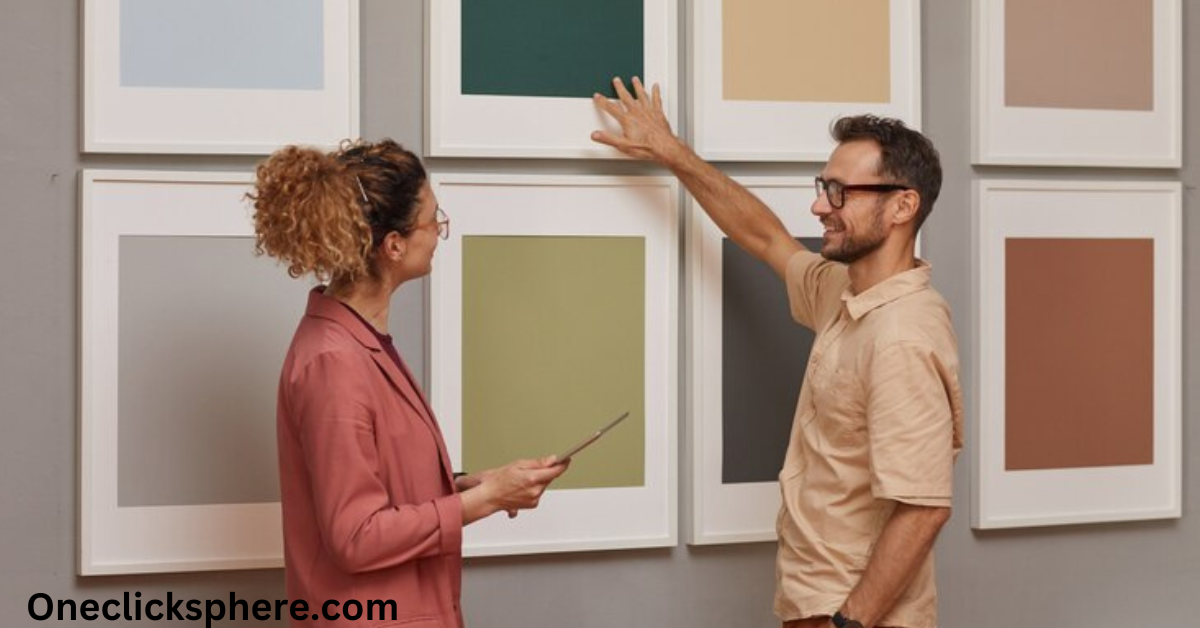Selecting a proper wall art size can have a major effect. The right size makes a room feel complete. It may feel odd if the size is incorrect.
If you love decorating or just want to refresh your space, size matters. Many people ask, “What size should I get?” It can be hard to know.
In this simple guide, we’ll help you pick the best size for your wall. You’ll learn how to measure your space, choose the right art for each room, and arrange more than one piece if you like.
Standard Wall Art Sizes
To make it easier to decide what works best in your space, here’s a quick reference table with common wall art sizes and where they fit best:
| Wall Art Size | In Inches | Best For |
| Small | 8” x 10”, 11” x 14” | Small walls, gallery walls, and bathrooms |
| Medium | 16” x 20”, 18” x 24” | Hallways, offices, bedrooms |
| Large | 24” x 36”, 30” x 40” | Living rooms, above beds/sofas |
| Oversized | 36” x 48” and above | Focal walls, lobbies, and open spaces |
How to Pick the Ideal Wall Art Size for Any Space
Living Room Wall Art Size Guide
In the living room, wall art often goes above the sofa or on a large empty wall. Here are some general rules:
- Art above the sofa should be 2/3 to 3/4 the width of the furniture below it.
- Keep the bottom of the art about 6 to 10 inches above the top of the furniture.
- For a single large piece, go with 30” x 40” or bigger.
- For a gallery wall, use a mix of small to medium pieces grouped with equal spacing.
Bedroom Wall Art Size Guide
The wall above your headboard is a perfect spot for artwork:
- A single piece: 24” x 36” or 30” x 40”.
- Two panels (diptych): each around 18” x 24”.
- Three 16″ x 20″ panels, or a triptych, of equal dimensions.
Leave at least 6 to 12 inches of space between the art and the top of the headboard.
Dining Room Wall Art Size Guide
In a dining area, you want your art to complement the table:
- One large focal piece works great: 30” x 40” or larger.
- Or opt for a balanced trio of medium frames, each 18” x 24”.
Match the art’s width to be around 2/3 the width of your dining table.
Hallway & Entryway Wall Art Size Guide
Smaller spaces like hallways and entryways benefit from vertical art or a series of small frames:
- Ideal sizes: 11” x 14”, 16” x 20”.
- Use symmetrical placement for a clean, professional look.
Office Wall Art Size Guide
In an office or study, use artwork that inspires without overwhelming:
- One medium to large piece behind the desk: 18” x 24” to 24” x 36”.
- A group of small prints on a side wall: 8” x 10” to 11” x 14”.
Measuring Your Wall Space
Before buying any wall art, measure your wall. Use painter’s tape to mock the size of your art on the wall. According to the 60–66% rule, your artwork must fill roughly 60–66% of the wall.
- Take the calculations of your open wall’s height and width.
- Multiply each by 0.60 and 0.75 to get the ideal art size range.
- Pick artwork that falls within these dimensions.
- Consider grouping multiple pieces to meet the target area.
Single Art Piece vs. Gallery Wall
Single Piece of Art
A room’s focal point can be one beautiful piece. Choose oversized art for large walls and minimal interiors. Always center the art horizontally above furniture.
Gallery Wall
Gallery walls are perfect for:
- Showcasing family photos
- Mixing art styles and frame shapes
- Creating texture and visual movement
Tips for gallery walls:
- Leave 2-3 inches between each frame
- Keep the layout symmetrical or balanced visually
- For an organized appearance, use similar frames; for an eclectic charm, use multiple pieces.
Wall Art Orientation – Portrait, Landscape, or Square?
Choosing the right orientation helps the room feel balanced:
| Orientation | Best For |
| Portrait | Tall walls, narrow spaces |
| Landscape | Above sofas, beds, and wide furniture |
| Square | Small spaces, balanced symmetry |
Wall Art Sizes by Wall Type
Above the Sofa or the Couch
- Art’s width should be at least 60% of the sofa’s depth.
- Height placement: 6–10 inches above the sofa
Above Fireplace
- Keep the artwork narrower than the mantel
- Ideal size: 24” x 36” or smaller
Staircase Wall
- Use a series of small pieces arranged in a rising diagonal
- Size recommendations: 8″ x 10″, 11″ x 14″.
Choosing Wall Art for Different Styles
| Interior Style | Suggested Art Style | Best Size Range |
| Minimalist | Abstract, monochrome | Medium to large |
| Boho | Textured, colorful prints | Mixed sizes in a gallery |
| Industrial | Black and white, urban photography | Oversized pieces |
| Farmhouse | Vintage or rustic-themed art | Medium to large |
| Modern | Bold, geometric, or typography art | 24” x 36” and larger |
Tips for Hanging Wall Art
- Always hang at eye level, which is about 57 to 60 inches from the floor to the center of the art.
- Use level tools and a measuring tape for perfect alignment.
- When hanging multiple pieces, maintain consistent spacing.
Where can you get the Ideal Size Art for the Wall
Many online platforms offer customizable sizes:
- Etsy – Handmade and printable wall art in various sizes
- Society6 – Artistic prints from independent artists
- Minted – Elegant, gallery-quality framed pieces
- Desenio – Affordable and trendy wall art with size filters
Conclusion
Choosing the right size for your wall art is crucial to achieving a well-designed, cohesive look in any room. From compact hallway pieces to commanding oversized canvas art, every space has its ideal size range. Always measure, plan the layout, and consider the proportion between the wall and the furniture. Use this guide as your blueprint for transforming blank walls into powerful statements.

